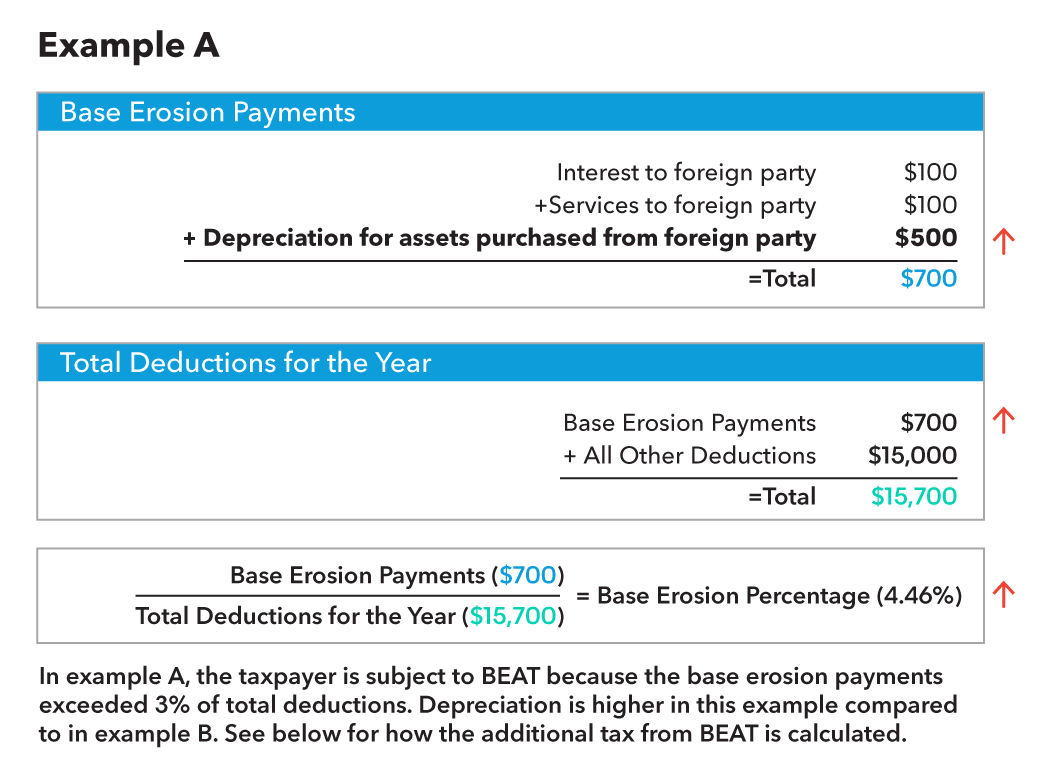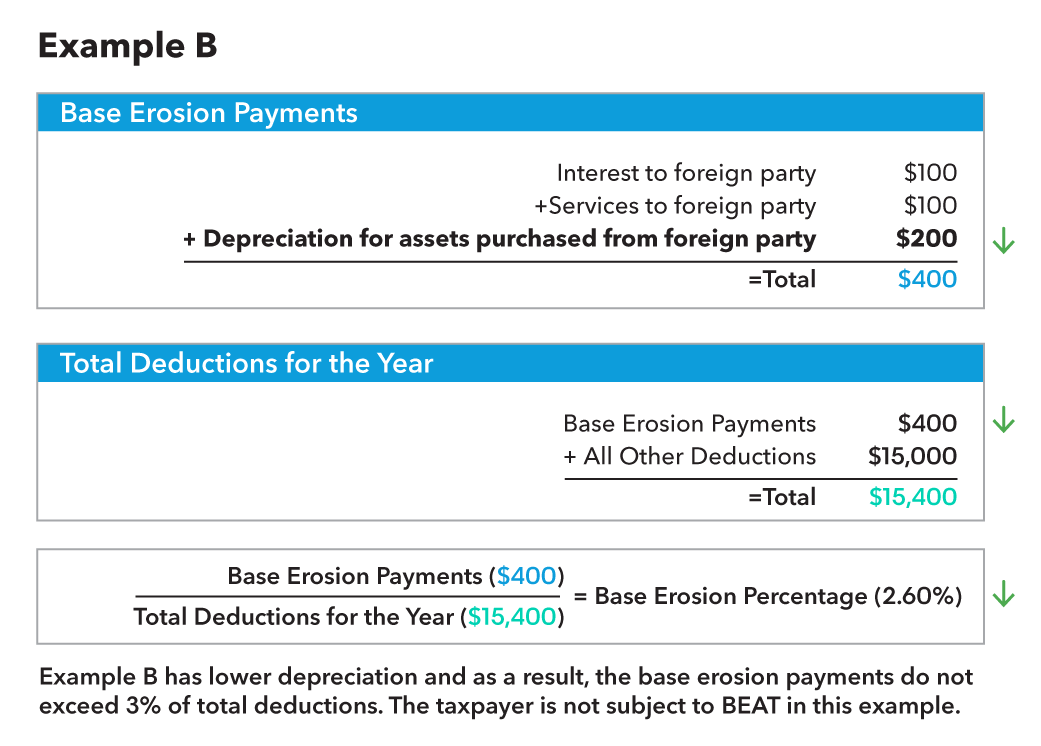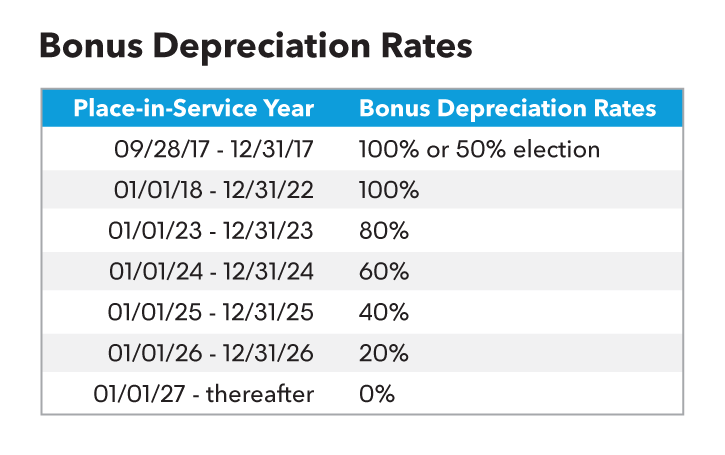Achieve an Optimal ETR With Our Fixed Assets Software
[Calculate depreciation of your fixed assets with ease.]
Depreciation can greatly impact corporate tax returns. It affects several calculations for businesses, such as base erosion and anti-abuse tax (BEAT), asset disposals, cost segregation studies, and accelerated depreciation methods. With ever-changing tax laws and regulations, understanding how to calculate and track depreciation can seem like a daunting task. However, Bloomberg Tax Fixed Assets offers a powerful solution that automates complex calculations based on up-to-date state, federal, and international tax regulations, helping businesses save time and money while achieving an optimal effective tax rate (ETR).
What is effective tax rate?
An effective tax rate is the percentage an individual or corporation must pay in income taxes once deductions, exemptions, or credits have been applied. It is a good indicator of financial performance and provides taxpayers better insight into their overall tax liability, versus accessing their marginal tax rate (MTR) or corporate tax rate.
Effective tax rate vs. marginal tax rate
Under a marginal tax rate, taxpayers are split into various brackets based on their earnings. As income increases, a person or corporation owes more in taxes. The first dollar earned will be taxed in a lower tax bracket than the last dollar that was earned. However, an effective tax rate offers a better snapshot of tax liability, since income, deductions, credits, and exemptions are all taken into consideration.
Calculating effective tax rate
The basic formula for calculating a corporation’s effective tax rate is:
Effective Tax Rate = Total Income Tax / Earnings Before Taxes
For example, if a corporation earned $500,000 before taxes and owed $50,000 in income tax, their effective tax rate would be 10%.
Although effective tax rate provides an estimate of what percentage of earnings will go toward taxes during a given year, it does not reflect what a corporation will owe in taxes year-to-year, since deductions or credits may apply one year but not the next.
Multinational organizations need to be mindful that different countries or jurisdictions have different sets of rules when calculating an effective tax rate. To mitigate risk, Bloomberg Tax Fixed Assets helps businesses stay compliant with real-time updates on latest international, federal, and state tax law changes and how that relates to depreciation calculations.
[Minimize your effective tax rate with Bloomberg Tax Fixed Assets.]
Base erosion and anti-abuse tax and depreciation
Part of the Tax Cuts and Jobs Act (TCJA) of 2017, base erosion and anti-abuse tax (BEAT) applies a 10% minimum tax to multinational corporations with gross receipts of $500+ million.
BEAT was enacted to prevent corporations from avoiding domestic tax liability by shifting profits outside the U.S. Corporate taxpayers are subject to BEAT if their base erosion payments exceed 3% (or 2% for certain firms) of total deductions. Base erosion payments are any payments made to a foreign related party that resulted in a tax deduction for the U.S. taxpayer.
How is BEAT calculated?
BEAT is 10% of modified taxable income minus regular corporate income tax, which cannot go below 0. Modified taxable income is determined by starting with taxable income then adding back base erosion payments, including interest, services, and deductions for depreciation and amortization for property acquired from a foreign related party.
BEAT Percentage = Base Erosion Payments
Total Deductions
A change in depreciation and amortization will directly increase the numerator and denominator for determining if BEAT applies. If it does apply, then the amount of depreciation will directly increase the base of BEAT liability that the corporation pays times 10%. In other words, the corporation will pay 10% of all depreciation and amortization taken as BEAT liability.
Base Erosion Percentage Test


Reducing BEAT exposure
Selecting which countries to conduct business with and what expenses will be needed for expansion can help control whether a multinational corporation qualifies for BEAT in the first place. If a corporation is subject to BEAT, bonus depreciation and cost segregation – two methods to accelerate depreciation – can actually increase BEAT exposure. Companies looking to slow down depreciation can choose to not elect bonus and/or switch to asset disposal strategies. Both are done on a class-life basis where the former is done yearly, and the latter is a one-time election. Additionally, corporations should forecast future expenses, heavy fixed assets, and intangibles purchases and adjust their financial strategy accordingly.
Guidance on optimizing your ETR
Bloomberg Tax’s Maggie Lust, CPA, CSPO answers fixed assets related effective tax rate questions, including when to consider selling an asset and what U.S. companies can do to reduce their ETR when operating internationally.
Asset disposals and recaptured depreciation
Asset disposal is the removal of a capital asset from a company’s accounting records, which is typically done by selling, trading, or discarding it. Common reasons for asset disposal are:
- The asset has fully depreciated.
- The asset is outdated or no longer needed.
- Its repair costs would outweigh the value.
What are asset disposal strategies?
If selling a depreciating asset, a company should sell the assets that have taken less depreciation, so that they still have some adjusted basis, which would result in less depreciation recapture, which is taxed at the higher ordinary rates. This type of consideration could lead to tax savings for a company thereby reducing the overall ETR.
When the sale price of an asset exceeds the tax cost, the tax benefit that the taxpayer received from deducting depreciation must be recovered as income. The recaptured depreciation for an asset that has been disposed of will be taxed at higher ordinary tax rates, instead of capital tax rates. The amount that must be taxed at the ordinary tax rates is the lesser of the total depreciation deducted on the asset or the total gain realized.
Tax planning may help companies reduce the amount of recaptured deprecation. If choosing a property that was depreciated, then they will have more taxable gain on the higher tax rate. It may be beneficial to depreciate a property at a slower rate if a company does not expect to have the property for long.
Cost segregation studies and depreciation
When a corporation acquires a building, that building is typically depreciated using a straight-line method over a span of 39 years. Because buildings contain multiple assets, those assets are often eligible for shorter recovery lives, such as five years, seven years, etc.
Cost segregation breaks large assets, such as a building or an improvement project, into component parts that depreciate at separate rates. A cost segregation study identifies and divides property assets into different depreciation class lives. Many of these component assets will have class lives of less than 20 years and therefore may qualify for bonus depreciation.
The potential upside from a cost segregation strategy can be huge: faster cost recovery using accelerated depreciation methods. This results in larger deductions in the early years of an asset’s depreciable life and lowers taxable income in those early years.
Accelerated depreciation
Bonus depreciation allows taxpayers to accelerate depreciation and take more depreciation earlier in the life of an asset versus taking smaller amounts along the life. Per the TCJA, bonus depreciation is phased down by 20% each year through the end of 2026. Rates are as follows:

In 2023, bonus depreciation rates have dropped down from 100% to 80%, meaning that companies cannot rely as heavily on bonuses to decrease taxable incomes as they were able to between 2017 and 2022. Thus, companies can plan to complete capital purchases in the year with higher bonus depreciation rates to reduce their tax liabilities and optimize effective tax rate.
How can Bloomberg Tax Fixed Assets help?
For businesses of any size, Bloomberg Tax Fixed Assets software offers a comprehensive solution to streamline asset management. This is done by automating procedures to ensure compliance, providing detailed reports about depreciation, and offering insights into asset value over time in order to maximize savings and optimize effective tax rate. Request a demo.